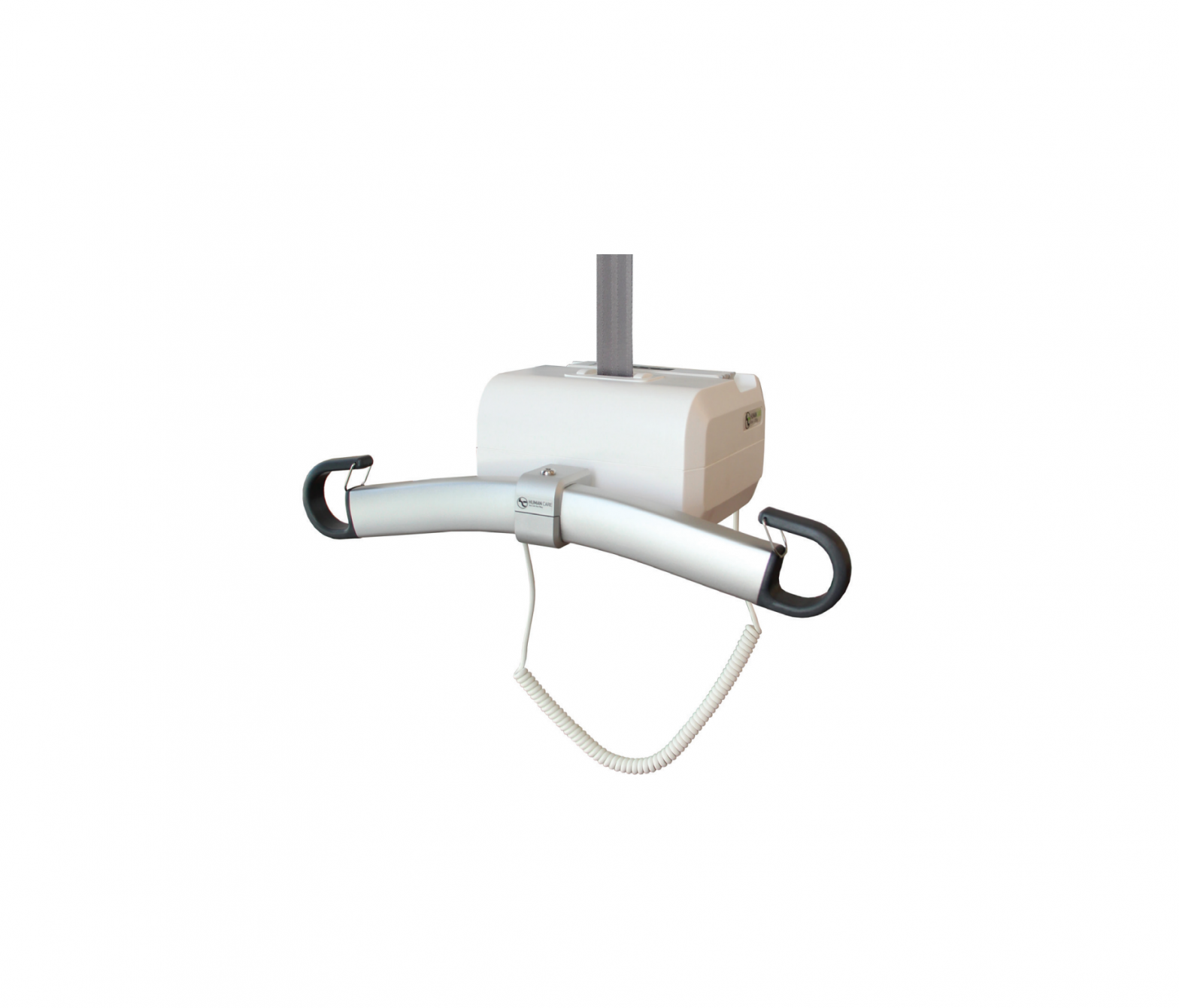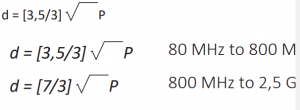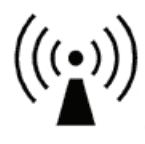HUMAN CARE 55200H Altair
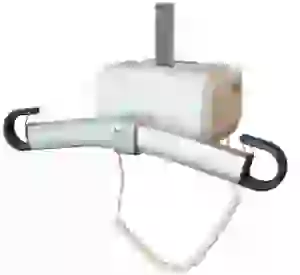
Altair
Art. No.: 55200H, 55210H, 55220H
A portable overhead lift provides you with the ability to move a patient safely and easily. The lift can be easily hung up and taken down, which means the same lift can be used in several different rooms or wards. The lift is used for lifting and moving a patient, for example to or from a bed, wheelchair or toilet or from the floor. The apparatus can also be used for walking training, and with the help of some accessories, for balance training and weighing.
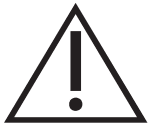 |
“WARNING!” This symbol is used when particular attention is required |
Lifting and moving a person always entails some risk. You should therefore read the user manuals for the lift and the lifting accessories carefully. Always make sure that the accessories you are using are intended for use with the lift. As a caregiver, you are responsible for the patient’s safety and you must know whether or not the patient will be able to cope with the lifting process.
Human Care’s lifts are designed only to raise and lower patients in a vertical direction, and never diagonally or through angles. The lift must always be positioned directly above the patient when lifting. The patient must always be positioned above the surface onto which they are to be lowered.
             |
LIFTING OR LOWERING A PATIENT DIAGONALLY OR IN AN ANGLED MOVEMENT MAY RESULT IN INJURY TO THE PATIENT OR THE CAREGIVER. |
If the product is used in any way that is not recommended by Human Care, then Human Care will not accept responsibility for any injuries or accidents that may occur.
If no other agreement or approval exists, the owner of the product is responsible for any combinations using accessories or products from suppliers other than Human Care.
Anyone using the equipment must have been given adequate tuition and training in use of the lift and its accessories
Patients must not use the lift without an adult present. Never leave a patient alone in the lift.
Always contact your supplier if you have any questions or if anything is unclear.
Human Care’s products are continuously being developed and updated and we reserve the right to make design changes without prior notice.
Safety instructions
Before using for the first time, make sure that:
- you have read and understood the user manual for the lift and all of its accessories
- the lift has been installed in accordance with the installation instructions
- the lift accessories are intended for use with the lift and are correctly fitted
- Before use: charge battery upon arrival. To ensure battery capacity is maintained, the new ceiling lift must be charged for 8 hours immediately upon arrival before it is put in use or stored. This is because the ceiling lift may have been stored for some time and during that period not been charged regularly.
- Check to see if there is a distance strap suspended from the rail or if there is a hook fitted to the rail roller. The recommended minimum height from the floor to the distance strap is 1850 mm.
- Remove the lift and charger from the packaging.
- Remove the seal from the lift belt after first reading the user manual.
- Plug the charger in at an easily accessible wall socket.
- Plug the hand control into the charger (see page 8). If the indicator light on the charger is yellow, charge until the light turns green.













Important! The lift is designed exclusively for lifting people, and only one at a time. 












Important! Maximum 220 kg weight capacity when using two-point suspension with Altair Before use, always ensure that:
- personnel who use the equipment have been given adequate tuition and training in use of the lift and its accessories
- the lift belt is not twisted or worn and that it can move freely in and out of the lift
- lift accessories, e.g. sling, distance strap and rail roller, are showing no signs of wear or other damage
- the lift is correctly suspended in the distance strap, rail roller and rail
- the right types, sizes, materials and designs of the accessories have been selected with respect to the patient’s safety and needs
- the lift accessories have been correctly installed.
- The sling’s strap loops and suspension must be checked once the loops are fully extended when lifting but before the patient is lifted from the underlying surface
- It is important to always check that the loops are at the bottom of all hooks (see picture below), securely placed below the locking pin.


- If you have a lift with a telescopic hanger bar it is important that the hooks of the telescopic hanger bar are in the correct position, with the opening of the hook is facing upwards on both hooks (please see picture below). Check the position of the hook once the lift straps are stretched, but before the patient has left the surface.

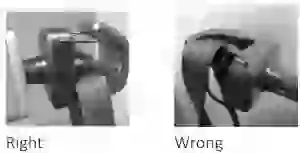
Human Care provides suitable training in safe operation of the lift and other accessories. Further information about slings, rail systems and other accessories can be found at www.humancaregroup.com.
             |
Important! To ensure that the lift belt will not be damaged, it is important that the lift is balanced during moving, lifting and lowering operations. Make sure the lift bar is balanced, the hooks are set at the same length and the sling is suspended correctly. Never hold or pull the lift belt when moving a patient. It is also important that the lift belt is tensioned as it is wound in |
             |
Warning! Modification of the product is not permitted without the manufacturer’s consent! |
             |
Important! If the lift is being used with a 2 point suspension method, the lift belt should not be fully retracted. Leave15 cm of the lift belt visible. |
Specifications
This product is designed for repeated use.
| Lifting capacity, max.: | |
| 55200H (55200 old part no with telescopic bar) | 150 kg/330 lbs |
| 55210H (55210 old part no with telescopic bar) | 220 kg/484 lbs |
| 55220H (55220 old part no with telescopic bar) | 300 kg/661 lbs |
| Dimensions: (WxHxL) | 400x140x300 mm |
| Weight of lift: | incl. telescopic hanger bar: 10,9 kg incl. fixed hanger bar: 10,2 kg |
| Batteries: | 2x12V, 2.3Ah |
| Emergency lowering: | Electronic and mechanical |
| Class: | Internally powered equipment |
| Type: | B |
| IP rating lift: | IPX4 |
| IP rating hand control: | IPX5 |
| Noise level: | <65dB (loaded and unloaded) |
| Lifting speed: | 1.8 m/min / 3.0 m/min (unloaded only) |
| Lifting height: | 2080 mm/ 81,9 in. |
| Start/stop: | soft |
| Indicator: | |
| Standby | flashing GREEN |
| Active | constant GREEN |
| Error | constant RED |
| Service | flashing YELLOW/GREEN, YELLOW/RED |
| Charging | constant YELLOW |
| Charger | Input 100-240V AC 50-60 Hz, 1.6A; Output 27.8V, 0.8A DC |
| IP rating charger: | IPX0 |
| ETL: | Yes |
Product description
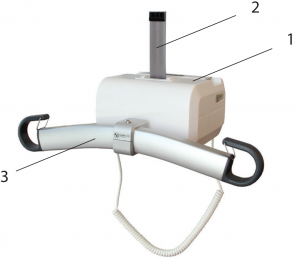



- Hand control
- Lift belt
- hanger bar
- Leg hook
- Secondary control panel
- Emergency lowering button
- Indicator
- Emergency stop
Intended use
The overhead lift has been designed and tested for use indoors and is classified as an IPX4 product.
  |
Important! The product must not be immersed in water. |
The climatic conditions should be as follows: ambient temperature from 0 °C to 40 °C, relative ambient humidity from 30% to 80% and ambient pressure from 790 hPa to 1060 hPa.
Product label
The product label contains information about the lift. This label is located underneath the lift.
Wireless transmission equipment, mobile telephones, etc. must not be used close to the device as it may affect its function. Particular caution must be observed when using strong sources of interference such as diathermy and such like, to ensure that no diathermy cables are placed on or near the device. If in doubt, ask the person in charge of the equipment or the supplier.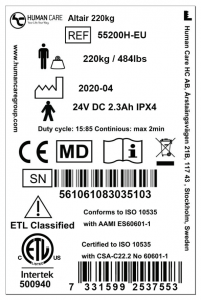

In compliance with / Standards / CE
The product has been tested by an accredited test institute and complies with necessary requirements for Class I products, in accordance with the directives and regulations for Medical Devices, MDD 93/42/EEC and Regulation 2017/745.
Symbols on the unit and product label
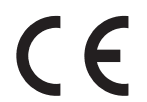  |
CE marking |
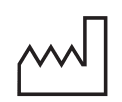  |
Date of manufacture |
  |
Manufacturer |
  |
Max. load |
  |
Instructions: Read the instructions and make sure you understand them before using this product |
  |
Article number/reference number |
  |
Serial number |
  |
Medical Device |
  |
Warning |
  |
The lift contains lead batteries and electronics and it must be recycled appropriately |
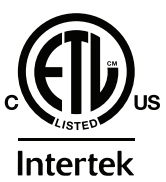  |
Third party certification marking (not applicable for all regions and
versions) |
  |
Type-B product |
  |
Switch the product off/Switch the product on |
Functions
Emergency stop
In an emergency, the emergency stop can be activated by pressing the RED button. To reset the emergency stop, turn the RED button clockwise.
Emergency lowering
In event of an emergency the emergency lowering function can be used. Press emergency lowering button and down button at least 3 seconds simultaneously to activate the emergency lowering. Older lifts (before july 2016) may not have double key command and delay.
An audio signal indicates that the lift is lowering. Always ensure that emergency lowering can be performed as safely as possible for the patient. The emergency lowering button only works when the lift is switched on and emergency stop has been deactivated. When the emergency lowering is active, the end position switches are inactive. If the button is pushed until the lift is in its lowest position, the lift will start to go up again. Always stop at the lowest position.
             |
The emergency lowering button must only be used in emergency situations. |
Safety catch
The lift is equipped with a safety catch. This prevents involuntary falls. If the lift belt is pulled out too quickly, the safety catch will engage, thus preventing the fall. Slacken the lift belt to unlock the catch. With the safety catch engaged, the lever (10) can never be turned, as this blocks the lowering function of the lift!
Mechanical emergency loweringDuring power loss and the hoist is loaded, user in the hoist, the mechanical emergency lowering is activated and the hoist is lowering in a safe and reliable manner.
OverheatingThe lift has overheating protection which stops the motor if it gets too hot. Overheating can occur if the motor is overloaded or operated continuously for quite a long time. The lift’s work cycle (work: pause) is 15:85. Maximum continuous operation is two minutes. If this is exceeded, there is a risk of the motor overheating.
Belt tension guardThe lift is equipped with a belt tension guard that prevents unintentional discharging of the lift belt. The lift must be loaded in order to be able to pull the belt out. This means that when the lift is lowered to a surface, the lift belt is only fed out if it is pulled upwards while the DOWN button on the hand control or the control panel is held pressed in. The purpose of this is to pull out enough of the lift belt in order to be able to hook the lift onto the suspension hook, or to unhook it.
Two SpeedsWhen the lift is loaded with less than approx. 40 kg it can be run at two speeds. If the Up or Down button is pressed for longer than 3 seconds, the lift will run in the faster mode. If the lift is loaded with more than approx. 40 kg it will only run in the slower mode.
Suspending the lift from the rail
Place the lift on a suitable surface. Feed out enough of the belt by pulling gently on the hook on the lift belt (2) while at the same time keeping the Down button on the hand control or on the control panel of the lift pressed in. Hook onto the hook on the distance strap hanging from the rail roller diagonally from above (see fig)

Switch on at the mains and the lift is ready for use.

Hand control
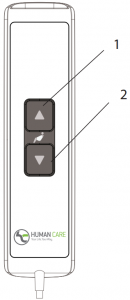
             |
The covers for the USB input and the charging input must be closed for the hand control’s water protection (IPX5) to be valid. |
The hand control is equipped with an Up button (1) and a Down button (2) for raising and lowering the lift.When the lift is loaded with less than approx. 40 kg it can be run at two speeds. If the Up or Down button is pressed for longer than 3 seconds, the lift will run in the faster mode. If the lift is loaded with more than approx. 40 kg it will only run in the slower mode.On the short side of the hand control there is an input for charging the lift and an input (mini-USB) for communicating with the lift.
Secondary control panel
The lift is equipped with a secondary control panel located on the lift which can be used as an alternative to the hand control. It is equipped with Up button (2) and Down button (3) for raising and lowering, an OFF/ON button (1) for activation/deactivation of the lift and an emergency lowering button (4) for quick lowering the lift.

Press emergency lowering button and down button at least 3 seconds simultaneously to activate the emergency lowering. Older lifts (before july 2016) may not have double key command and delay.
Indicator
| Flashing green | The lift is on and ready for use. Battery level is Full. |
| Flashing yellow | The lift is on and ready for use. Battery level is Normal. It might be a good idea to charge up the lift. |
| Flashing red | The lift is on and ready for use. Battery level is Low. The lift must be charged up immediately. |
| Constant green | The lift is in operation or loaded. |
| Constant red | The lift safety catch has engaged. (See troubleshooting table) |
| Constant yellow | The lift is charging. The lift’s function is blocked. |
| Flashing green/ yellow | The lift’s service interval has passed. Service and annual inspection must be performed immediately. |
| Flashing red/yellow | The lift’s service interval has passed. Service and annual inspection must be performed immediately. Battery level is Low. The lift must be charged up immediately. |
Charger
The indicator on the lift flashes red when the batteries need recharging. Plug the charger cable into the hand control or put the hand control into the charger cradle and charging will start. When the lift is charging the indicator glows yellow.
             |
The lift can only be used with a charger recommended by Human Care, article number 50880. |
- Charge the lift regularly, preferably every night
- The charger must be disconnected when you use the lift
- The lift’s function is blocked during charging. Disconnect the charger to use the lift
- The unit charges regardless of the position of the main switch
- If the emergency stop is activated the lift cannot be charged. Check that the emergency stop is not activated when charging.
- The charger must only be connected to an earthed socket.
             |
Important! When the batteries reach a critically low battery level, it will no longer be possible to perform more lifts (up or down). However, there is still enough battery power for emergency lowering. See separate manual for the charger, 99599 |
Detaching the lift from the rail system
Lower the lift so that it stands solidly on a surface. The lift will stop automatically when it reaches the surface. It may be useful to use Human Care’s cart (Art.no. 50346). Feed more belt out by pulling gently on the hook on the lift belt while at the same time pressing the Down button on the hand control or control panel. When the belt is slack it can be easily unhooked from the distance strap by lifting the belt loop upwards.
Press the Up button on the lift to move the belt back. Make sure the belt is kept taut and gets rolled up in the lift straight, without folding.
             |
Important! When the lift is taken down, the belt must be kept taut while it is fed into the lift. |
Using the lift
Press the Up button on the hand control or control panel on the lift to lift the patient. Press the Down button on the hand control or control panel to lower the patient. Pressing the button activates a soft start, and releasing it causes a soft stop.
Data communication
Altair is able to communicate with a standard PC (Win 7/Win 8). This communication makes it possible to obtain statistics and other information on the lift.To communicate with the overhead lift you need the Human Care Data and Service Application, software that can be downloaded from the Human Care website, www. humancaregroup.com.Connect the lift to your PC with a standard mini-USB cable. Start the Human Care Data and Service Application and follow the instructions. The lift must be switched on for communication to be possible. The lift is deactivated while communication takes place.Telescopic hanger barThe telescopic hanger bar is only avaliable on lifts with part no: 55200, 55210 and 55220.
- The following information can be read from the lift
- Article number, serial number and production date
- Max. user weight
- Software version
- Service dates
- Periodic usage statistics
- Error log
Connected computer equipment must fulfil the requirements of IEC 60950-1 or IEC 60601-1
The latest software for the lift should always be used. You can find the latest version at our website.
Telescopic hanger bar
The telescopic hanger bar is only available on lifts with part no: 55200, 55210 and 55220.
Set the telescopic bar (4) to the prescribed position. Ensure that the bar hooks are in the same position on both sides. Place the patient in the prescribed sling according to the sling instructions and hang the sling in the hooks on the telescopic bar and in the leg hook, if you are using three-point suspension (5). Check that the sling’s lifting straps are properly anchored in all hooks.
The telescopic bar hooks have three adjustable positions. To change position, turn the hooks 1/4 turn while pushing or pulling the hooks to the desired position. The hooks will automatically fall into place in the position, and so it is necessary to repeat the turn (1/4 turn) when passing the middle position (position 2) (See fig).

o Important! Do not hold on to the telescopic bar or the hooks when performing a lift.
Lifting height
The lifting height corresponds to the difference between the highest and lowest position the lift can reach. This corresponds to the length of the lift belt. The length of the lift belt is 1680 mm/66.1″(300 kg), 2050 mm (150/220 kg).If you want to extend the lift belt there are distance straps in various lengths available as extras. The lifting height of the lift is not affected by the length of the distance strap.The total height of the system consists of the rail in which the lift is mounted, the rail roller in the rail, a distance strap if relevant and the lift.
Accessories
If the maximum weight for any of the accessories, e.g. slings, lift bars and any other accessories is NOT the same as for the lift, then the lowest max. weight given for any one product is the one that shall apply. Always check the label on the lift and lifting
accessories or contact Human Care if you have any questions or if anything is unclear.Human Care recommends using only Human Care slings with Human Care lifts. See our website for all accessories.
Troubleshooting
| Description | Indicator | Action |
| Nothing happens when you press the Up button or the Down button on the hand control or the control panel | Not lit | 1) Check that the mains switch is on.2) The batteries are fully discharged. Charge the lift immediately3) The emergency stop is pushed in. Deactivate by turning the red button clockwise. |
| Nothing happens when you press the Up button or the Down button on the hand control | Flashing green Flashing yellow Flashing red | Check the hand control. If the hand control is defective it needs to be replaced. Contact a service technician. |
| Nothing happens when you press the Up button or the Down button on the hand control or the control panel. | Constant red | 1) Lift motor is overheated. Wait a while and try again.2) Lift is overloaded. Lower using the emergency lowering button |
| Nothing happens when you press the Up button or the Down button on the hand control or the control panel. | Constant yellow | Charging in progress. Interrupt charging. |
| Nothing happens when you press the Up button on the hand control or the control panel. | Flashing green Flashing yellow Flashing red | The lift is in its maximum upper position. Press the Down button on the hand control or the control panel to lower the lift. |
| Nothing happens when you press the Down button on the hand control or the control panel. | Flashing green Flashing yellow Flashing red | The lift is in its maximum lower position. Press the Up button on the hand control or the control panel to raise the lift. |
| The belt is not fed out when the lift is on a surface. | Flashing green Constant green Flashing yellow Flashing red | The lift belt has to be pulled upwards at the same time as the Down button on the hand control or the control panel is held pressed in. |
| The indicator switches from flashing green or yellow to flashing red. | Flashing red | The batteries need charging but you can still lift the patient a few times. The lift should be set to charge as soon as possible. |
Care instructions for the lift and accessories
Care instructions for the lift
- The lift should be recharged every night
- Wipe the overhead lift using a slightly dampened drying cloth. Washing up liquid can be used
- Never wash the overhead lift using water or any other fluids.
- NEVER use strong detergents on the overhead lift.
- If the lift needs to be disinfected, DuPontTM Virkon® can be used The lift belt must be washed and disinfected as instructed above
- Activate the emergency stop if the overhead lift is not to be used for a few days. Otherwise the batteries will run down
- The lift must always be stored or moved lying horizontally
Annual inspectionThe lift must be inspected at least once a year by someone with Human Care qualifications and in accordance with Human Care’s directive. Pay particular attention to parts that show wear. The lift’s service indicator will flash yellow when a service needs to be performed.
Daily inspection
- Always check the sling before use. There must be no loose seams or other signs of wear to lift belts, belts and fabric. If there are, replace the sling
- Check the overhead lift for visible signs of damage
- Check that the lift is correctly mounted in the distance strap or rail roller
Monthly inspectionCheck the lift belts for damage or wear and tear. Feed out enough of the lift belts to allow their entire length to be checked. Contact a retailer if the belt is damaged
ServiceInstallation, service and maintenance must only be performed by personnel with Human Care qualifications and in accordance with Human Care’s directive. Only original spare parts may be used.
Service agreementsHuman Care invites you to sign a service agreement for annual inspection and test loading.
Transport and storageDuring transport, or when the lift is not going to be used for some time, the mains switch must be off or the emergency stop button pushed in, otherwise the batteries will discharge. The lift must be transported and stored lying horizontally. The climatic conditions should be as follows: ambient temperature from 0 °C to 40 °C, relative ambient humidity from 30% to 80% and ambient pressure from 790 hPa to 1060 hPa.
Expected service lifeThe lift is expected to function for 11,000 lifting cycles at maximum lifting capacity or for 10 years with correct service and maintenance.
RecyclingOnce the product has reached the end of its technical life, it must be disposed of in constituent parts according to local authorities. Metal parts must be treated as metal waste for optimum recycling. Plastic parts can be sorted as residual waste.
Guidance and manufacturer’s declaration
| Guidance and manufacturer’s declaration – electromagnetic emissions | ||
| The Human Care lift is intended for use in the electromagnetic environment specified below. The customer or the user of the Human Care lift should assure that it is used in such an environment. | ||
| Emission test | Compliance | Electromagnetic environment – guidance |
| RF emissions CISPR 11 | Group 1 | The Human Care lift uses RF energy only for its RF emissions are very low and are not likely to cause any interference in nearby electronic equipment. |
| RF emissions CISPR 11 | Class B | The Human Care lift is suitable for use in all establishments including domestic establishments and those directly connected to the public low-voltage power supply network that supplies buildings used for domestic purposes. |
| Harmonic emissions IEC 61000- 3-2 | Class A | |
| Voltage fluctuations/flicker emissions IEC 61000-3-3 | Complies |
| Guidance and manufacturer’s declaration – electromagnetic immunity | |||
| The Human Care lift is intended for use in the electromagnetic environment specified below. The customer or the user of the Human Care lift should assure that it is used in such an environment. | |||
| Immunity test | IEC 60601 test level | Compliance level | Electromagnetic environment – guidance |
| Electrostatic discharge (ESD)IEC 61000-4-2 | +/- 6 kV contact+/- 8 kV air | +/- 6 kV contact+/- 8 kV air | Floors should be wood, concrete or ceramic tile. If floors are covered with synthetic material, the relative humidity should be at least 30 %. |
| Electrical fast transient / BurstIEC 61000-4-4 | +/- 2 kV for power supply lines+/- 1 kV for input/ output lines | +/- 2 kV for power supply linesn/a. for input / output lines | Mains power quality should be that of a typical commercial or hospital environment. |
| SurgeIEC 61000-4-5 | +/- 1 kV differential mode+/- 2 kV common mode | +/- 1 kV differential moden/a. for common mode | Mains power quality should be that of a typical commercial or hospital environment. |
| Voltage dips, short interruptions and voltage variations on power supply input linesIEC 61000-4-11 | <5 % UT(>95 % dip in UT) for 0,5 cycle40 % UT(60 % dip in UT) for 5 cycles 70 % UT(30 % dip in UT) for 25 cycles<5 % UT (>95 % dip in UT)) for 5 sec | <5 % UT(>95 % dip in UT) for 0,5 cycle 40 % U(60 % dip in UT) for 5 cycles70 % UT(30 % dip in UT) for 25 cycles <5 % UT(>95 % dip in UT)) for 5 sec | Mains power quality should be that of a typical commercial or hospital environment. If the user of the Human Care lift requires continued operation during power mains interruptions, it is recommended that the lift be powered from an uninterruptible power supply or battery. |
| Power frequency (50/60 Hz)magnetic fieldIEC 61000-4-8 | 3 A/m | 3 A/m | Power frequency magnetic fields should be at levels characteristic of a typical location in a typical commercial or hospital environment |
| NOTE UT is the a.c. mains voltage prior to application of the test level. |
| Guidance and manufacturer’s declaration – electromagnetic immunity | |||
| The Human Care lift is intended for use in the electromagnetic environment specified below. The customer or the user of the Human Care lift should assure that it is used in such an environment. | |||
| Immunity test | IEC 60601 test level | Compliance level | Electromagnetic environment – guidance |
| Conducted RF
IEC 61000-4-6Radiated RF IEC 61000-4-3 |
3 Vrms
150 kHz to 80 MHz3 V/m 80MHz to 2,5GHz10 V/m 800MHz to 2,5GHz |
3 Vrms
3 V/m 10V/m |
Portable and mobile RF communications equipment should be used no closer to any part of the Human Care lifts, including cables, than the recommended separation distance calculated from the equation applicable to the frequency of the transmitter.
Recommended separation distance
where P is the maximum output power rating of the transmitter in watts (W) according to the transmitter manufacturer and d is the recommended separation distance in meters (m). Field strengths from fixed RF transmitters, as determined by an electromagnetic site survey, a should be less than the compliance level in each frequency range. b Interference may occur in the vicinity of equipment marked with the following symbol. |
| NOTE 1 At 80MHz and 800MHz, the higher frequency range applies.NOTE 2 These guidelines may not apply in all situations. Electromagnetic propagation is affected by absorption and reflected from structures, objects and people. |
| a Field strengths from fixed transmitters, such as base stations for radio (cellular/cordless) telephones and land mobile radios, amateur radio, AM and FM radio broadcast and TV broadcast cannot be predicted theoretically with accuracy. To assess the electromagnetic environment due to fixed RF transmitters, an electromagnetic site survey should be considered. If the measured field strength in the location in which the Human Care lifts is are used exceeds the applicable RF compliance level above, the Human Care lifts should be observed to verify normal operation. If abnormal performance is observed, additional measures may be necessary, such as reorienting or relocating the Human Care lifts. b Over the frequency range 150 kHz to 80 MHz, field strengths should be less than 10 V/m. |
| Recommended separation distances between portable and mobile RF communications equipment and the Human Care lifts. | |||
| The Human Care lifts are intended for use in an electromagnetic environment in which radiated RF disturbances are controlled. The customer or the user of the Human Care lifts can help prevent electromagnetic interference by maintaining a minimum distance between portable and mobile RF communications equipment (transmitters) and the Human Care lifts as recommended below, according to the maximum output power of the communications equipment. | |||
| Rated maximum output power of transmitter
W |
Separation distance according to frequency of transmitter m | ||
| 150 kHz to 80 MHz | 80 MHz to 800 MHz | 800 MHz to 2.5 GHz | |
| d = 1,2√P | d = 1,2√P | d = 0,7√P | |
| 0.01 | 0.12 | 0.12 | 0.07 |
| 0.1 | 0,37 | 0,37 | 0,22 |
| 1 | 1,16 | 1,16 | 0,7 |
| 10 | 3,67 | 3,67 | 2,21 |
| 100 | 11.6 | 11.6 | 7 |
| For transmitters rated at a maximum output power not listed above, the recommended separation distance d in meters (m) can be estimated using the equation applicable to the frequency of the transmitter, where P is the maximum output power rating of the transmitter in watts (W) according to the transmitter manufacturer.Note 1: At 80 MHz and 800 MHz, the separation distance for the higher frequency range applies.Note 2: These guidelines may not apply in all situations. Electromagnetic propagation is affected by absorption and reflection from structures, objects and people. |


References
[xyz-ips snippet=”download-snippet”]

